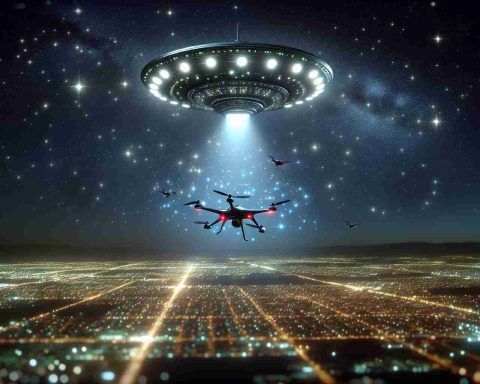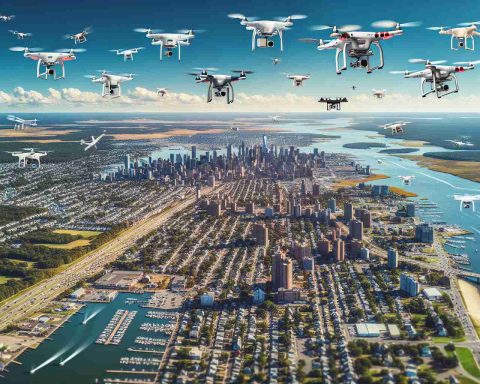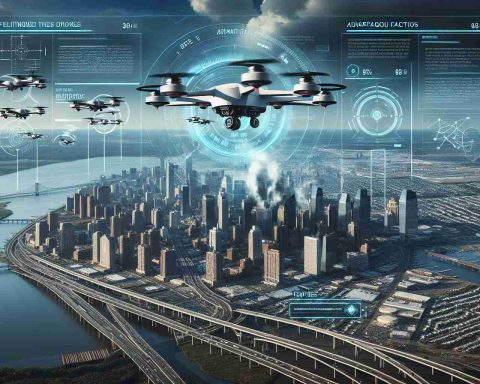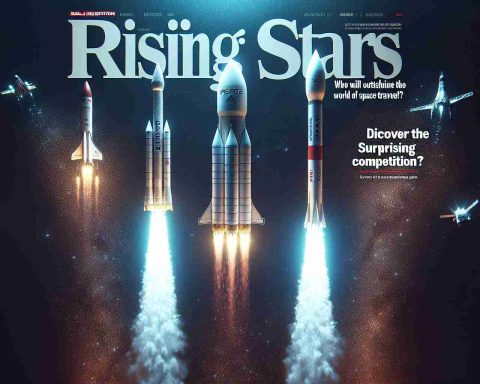Space’s New Ownership Landscape
The exploration of outer space is shifting dramatically, moving from governmental initiatives to private enterprises. Elon Musk’s SpaceX currently dominates the satellite market, owning over half of all operational satellites. The company has ambitious plans that include a mega-constellation of approximately 42,000 satellites designed for extensive connectivity and communication.
In a recent lecture, astrophysicist Aaron Boley highlighted the rapid increase in satellite launches, noting that SpaceX alone has launched more satellites in the past six years than the entire previous sixty years combined. He pointed out that while satellites provide various substantial benefits, such as aiding in climate monitoring and disaster management, they also contribute to significant challenges, including the growing space debris issue.
One striking incident occurred in Ituna, Saskatchewan, where farmers discovered remnants of a SpaceX spacecraft scattered across their fields. The discarded trunk of the Crew Dragon capsule, released before re-entry, became an unexpected hazard. Local farmers collaborated to secure the debris until SpaceX representatives arrived to discuss retrieval and compensation.
While space exploration can facilitate lifesaving advancements, such as the ongoing success of the Cospas-Sarsat search and rescue satellite system, the increasing number of satellites raises concerns over sustainability and environmental impact. As private interests expand in this realm, the critical question remains: Who will manage and protect the vastness of outer space?
Understanding the Broader Implications of Space Privatization
As private enterprises like SpaceX redefine the landscape of outer space exploration, the ramifications extend far beyond technological advancements into the very fabric of society, culture, and the global economy. The unprecedented growth in the satellite market facilitates global connectivity, but it raises critical questions about inequitable access to these technologies. Wealthier nations can leverage advanced satellite systems to bolster their economies, while less affluent countries may struggle to engage at the same level, potentially exacerbating existing inequalities.
On an environmental front, the surge in satellite launches significantly contributes to the growing problem of space debris. With thousands of satellites in orbit, the risk of collisions increases, posing threats not only to operational spacecraft but also to future space missions. This could lead to an unmanageable Kessler Syndrome, where the density of objects in low Earth orbit becomes so high that any collision could trigger a cascade effect. Future regulation will be crucial in addressing these challenges and ensuring sustainable practices in space exploration.
Furthermore, as we move deeper into an era dominated by private space ventures, the long-term significance of these developments cannot be overstated. Space resource utilization, including asteroid mining and lunar exploitation, presents promising economic opportunities but also raises ethical dilemmas surrounding ownership and stewardship of celestial bodies. The quest for cosmic resources may usher in a new age of interplanetary colonization, and with it, the need for robust governance frameworks that transcend national interests, touching upon the very notion of humanity’s collective place in the cosmos.
Exploring the Emerging Trends and Challenges in Commercial Space Ownership
Introduction
The landscape of outer space exploration has evolved significantly over recent years, transitioning from predominantly governmental efforts to a flourishing realm of private enterprises. This shift has led to a host of innovations, challenges, and responsibilities that demand attention as we navigate the complexities of commercial space ownership.
The Rise of Private Enterprises
Private companies, spearheaded by Elon Musk’s SpaceX, are now at the forefront of satellite operations. SpaceX dominates the market, boasting control over more than half of the operational satellites currently in orbit. Their ambitious plans include the development of a mega-constellation of approximately 42,000 satellites, aimed at enhancing global connectivity and communication.
Increasing Satellite Launches
Astrophysicist Aaron Boley has recently drawn attention to the remarkable surge in satellite launches, emphasizing that SpaceX has outperformed previous decades combined. This rapid increase signals a new era in space where advanced technologies are deployed to address various global challenges, including climate change and disaster management.
Space Debris and Environmental Concerns
Despite the numerous advantages of satellite technology, the burgeoning number of satellites raises critical environmental issues. One significant concern is the accumulation of space debris. As more entities enter space exploration, the risk of collisions and the subsequent creation of more debris also rises. This has initiated discussions about sustainable practices in satellite deployment and space navigation.
Notable Incidents Highlighting Risks
A exemplifying incident in Ituna, Saskatchewan, where remnants of a SpaceX vehicle were discovered scattered across farm fields, underscores the potential risks associated with increased satellite launches. The discarded trunk of the Crew Dragon capsule posed safety hazards for local agriculture, prompting farmers to secure the debris until SpaceX representatives could assess the situation. Such occurrences highlight the necessity for proactive measures in space debris management.
The Role of Satellites in Global Safety
The utilization of satellite technology extends beyond mere communication. The Cospas-Sarsat search and rescue satellite system exemplifies how satellites can play a pivotal role in lifesaving missions. With the advancement of technology, satellite systems are increasingly integral to emergency response strategies worldwide.
Key Takeaways: Who Will Govern Space?
As private interests continue to proliferate within the realm of space exploration, a pressing question arises: Who will govern and ensure the safety and sustainability of this vast, unregulated area? This question poses a challenge not only for private companies but also for international bodies and governments, as cooperation and regulation become fundamental in managing space resources effectively.
FAQs About the Changing Landscape of Space Ownership
Q: What is the status of SpaceX’s satellite launching capabilities?
A: SpaceX currently dominates the satellite market, having launched more satellites in the last six years than were launched in the previous sixty combined.
Q: What are the dangers associated with increased satellite launches?
A: The major dangers include space debris generation, potential collisions between satellites, and risks of falling debris onto Earth.
Q: How does satellite technology contribute to climate monitoring?
A: Satellites provide crucial data for climate research, tracking weather patterns, environmental changes, and disaster management.
Conclusion
As we look toward the future of space exploration, the transition to privatized operations brings with it both exciting possibilities and considerable challenges. The industry must navigate space sustainability, debris management, and international regulations to ensure that the benefits of satellite technology are realized without compromising the integrity of the space environment. As discussions continue, staying informed about changes in the landscape of space ownership will be vital for all stakeholders involved.
For more on space exploration and ownership, visit SpaceX for the latest updates and innovations.



















